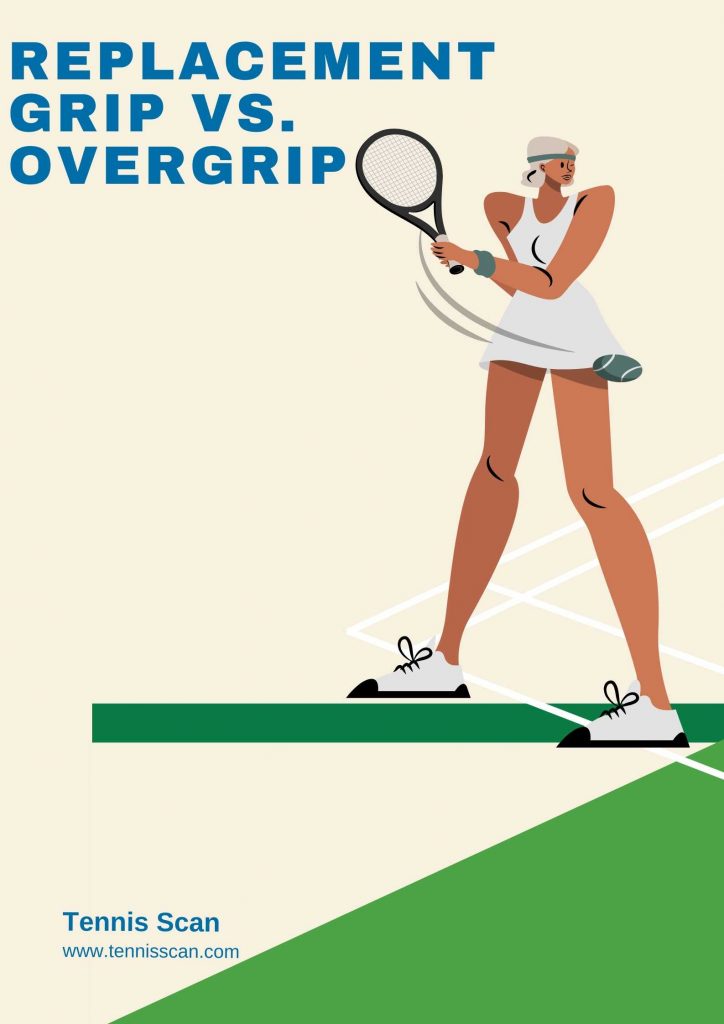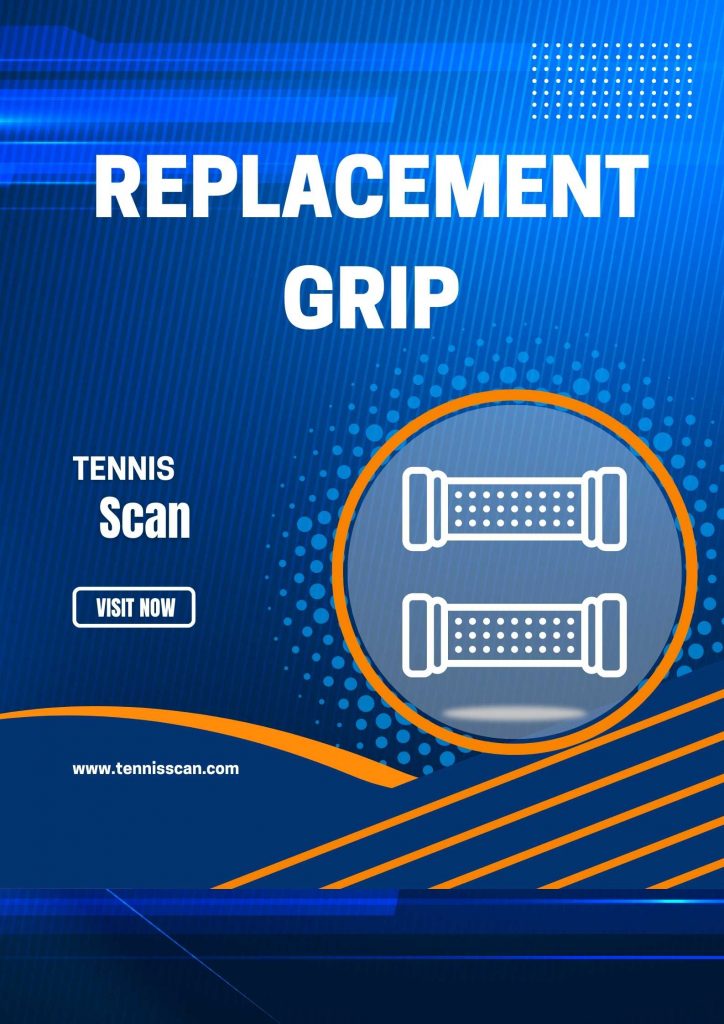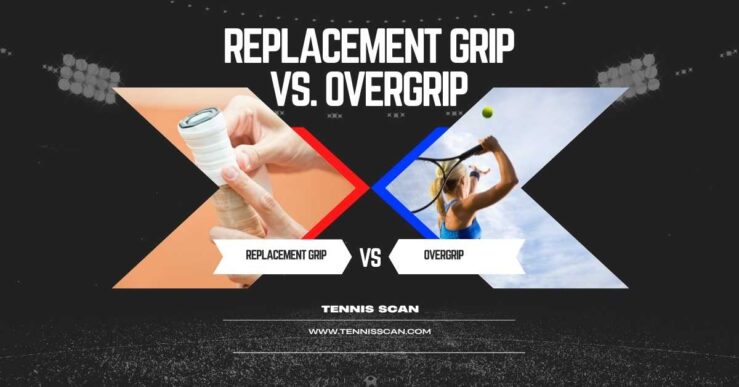Every time I interact with a newbie tennis player, I observe that they only have knowledge of one racquet grip style. In fact, newbie players frequently believe that the racquet’s default grip is their sole choice. This isn’t true, though, because there are overgrips, replacement grips, and original grips. What distinguishes replacement grips vs overgrips, then?
When you purchase a racquet, it comes with a tennis grip. When the original grip needs to be taken out and replaced, the replacement grip is used. In order to increase cushioning, perspiration absorption, width, and traction, an overgrip is placed over the grip. Once you are aware of them, the distinctions between these grips become fairly obvious.
Replacement Grip vs. Overgrip
You’ll begin to realize you need to modify your grip after playing tennis for a bit (typically after it’s worn down to the wood!). However, when the time comes to replace your grip, you are faced with a number of options and are unsure which to pick.
What distinguishes replacement grips vs. overgrips? Replacement grips are thicker and encircle the handle’s bottom. Overgrips cover the replacement grip and are less expensive and thinner. If you use an overgrip, you only need to worry about changing the less expensive and simpler to apply overgrip and not the replacement grip.

Replacement Grip
You need a replacement grip if you wish to enhance the original grip on your racquet. Different replacement grips are designed for various uses, including comfort, perspiration absorption, feel, handle thickness, and grip.
Leather, rubber, or synthetic materials can be used to create replacement grips. Rubber and synthetic materials are more comfortable for the hand because they are softer, provide more softness, and better withstand shock.
They don’t, however, do as well at conveying the “feel” of the game. Since leather provides a firmer grip and a better feel on the edges of the handle when used in conjunction with an overgrip, these grips are practically never utilized alone.
Additionally, leather enables more vibrations to be felt on the hand, which some players claim is important for a better sense of force and awareness. If you’re aware, leather doesn’t provide for the most pleasant grip, and they aren’t vegan either. The cost of synthetic replacement grips versus leather replacement grips is the last distinction.
Related to Babolat Pro Tour Overgrip Review
Advantages of Replacement Grip
The benefits of playing with an overgrip are as follows.
The only major drawback is that it needs to be replaced much more frequently than the main grip, which might be a hassle if you play frequently and much more so if there isn’t a sports store nearby. If you plan to utilize overgrips, buying in bulk is certainly the best option!

Overgrip
Overgrip is a special form of grip. Due to the fact that it isn’t attached to the naked frame, this grip is very different from the original and replacement grips. An overgrip is actually a supplementary grip that is placed on top of the tennis grip already present on the racquet.
Overgrips provide various advantages, including more cushioning, thicker handles, better perspiration absorption, improved stickiness, fewer blisters, and protection for the grip below. Overgrips are typically exclusively composed of synthetic materials or rubber whereas replacement grips can be constructed of three different materials.
This is due to how uncomfortable it is to directly hold the leather grip. The benefits of using a leather grip underneath the overgrip are numerous, as I have mentioned. Because they deteriorate considerably more quickly than new grips, overgrips are frequently marketed in packs.
Overgrips do, after all, come into contact with your hand. The Wilson Pro Overgrip, which provides a ton of comfort and tackiness, is my personal favorite overgrip. It also comes in a 12-pack, which provides hours and hours of play.
Advantages of Overgrip
Here are some benefits of simply changing your grip (and not using an overgrip at all)
Replacement grips may last longer, but they will eventually lose their grip and feel, especially if you play frequently and/or perspire a lot while you play. Utilizing an overgrip will probably be preferable in either of these scenarios.
Read our full review on Best Tennis Elbow Braces
Conclusion
You see, it wasn’t so difficult after all? The majority of people lump original grips and replacement grips together, however, I felt the need to elaborate because the original grip may be changed for a replacement grip. Keep in mind that overgrips just cover the grip; a leather grip by itself is not recommended.
FAQ’S
Since overgrips are thinner and less robust than the original grip, it is not a good idea to use them as a substitute. It will be pretty unpleasant and difficult. But if you do, I’d suggest using at least two and possibly three overgrips to give it some padding.
If you feel that using the original grip and an overgrip makes your grip too thick but you still want to use the overgrip, you may wish to remove the original grip and use only two overgrips instead.
Fortunately, grips aren’t very expensive and should be changed frequently anyhow, so experiment with a few various setups until you discover one that feels comfortable to you.
Use a couple of overgrips or even an additional replacement grip to bulk out your tennis racquet grip if it feels too thin. The issue is that as you add more layers, you begin to lose the sense of the bevels.
Some people don’t find this to be a problem, but many players enjoy the way the bevels feel. Applying a heat shrink sleeve as an option will enhance thickness while preserving the bevels.
This is dependent on a few elements. How often you play, how hard you play, the environment, how long your grip lasts, etc. Professional players may switch overgrips several times during a set, but for a leisure player, once every two weeks should be a reasonable place to start. You will eventually develop a sense of when the grip loses its grasp and it is time for a change.
